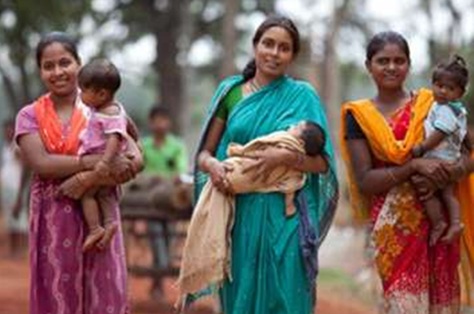| (General Studies Paper-2: Welfare schemes for vulnerable sections of the population by the Centre and the States and the performance of these schemes; Mechanisms, laws, institutions and bodies constituted for the protection and betterment of these vulnerable sections) |
Reference
The maternal mortality rate (MMR) in India has declined in the last few years. This rate has come down from 103 in the year 2017-19 to 93 in the year 2019-21.

What is maternal mortality rate?
Maternal mortality rate is the ratio of maternal deaths per 1,00,000 live births. Maternal death refers to the death of a woman during pregnancy or within 42 days of the end of pregnancy.
State-wise status
To clarify the state-wise status of maternal mortality rate, states have been classified into three categories:
Strong Action Group
This group includes those states where maternal mortality rate is high. These include states like Bihar, Jharkhand, Madhya Pradesh, Chhattisgarh, Odisha, Rajasthan, Uttar Pradesh, Uttarakhand and Assam.
States of the South
These states have recorded relatively low maternal mortality rate. These include states like Andhra Pradesh, Telangana, Karnataka, Kerala and Tamil Nadu.
Other States
These include the remaining states and other union territories.
Factors responsible for maternal mortality in India
- Delay in recognition of imminent danger due to poor educational level of family members and their financial status
- Transportation problem in accessing health services
- Delay in initiating specialized care in health facilities, such as hospitals
- Lack of skilled health workers: especially obstetricians, anesthetists and midwives
- Lack of blood banks
- Hypertensive disorders during pregnancy and delivery
- Unwanted pregnancies and immature techniques of abortion by fake doctors
- High risk factors with associated diseases like malaria, chronic urinary tract infection and tuberculosis in some states
- Challenges in preventing maternal deaths
- Lack of quality healthcare infrastructure in remote and tribal areas
- Socio-cultural barriers: early marriage, lack of education and reduced autonomy of women
- Private healthcare burden: increased out-of-pocket expenditure in treatment in private setup
- Under-reporting of maternal deaths leads to disruption in targeted interventions Barriers
Government efforts to reduce maternal mortality
- Janani Suraksha Yojana (JSY): Provides cash incentives for institutional delivery.
- Janani Shishu Suraksha Karyakram (JSSK): Ensures free delivery, medicines, diagnostics and transport.
- Target Programme: Improves quality of care in labour rooms.
- Pradhan Mantri Surakshit Matritva Abhiyan (PMSMA): Provides assured, comprehensive antenatal care.
- Maternal mortality surveillance and response (MDSR): reporting and response to maternal deaths
- 108 ambulance service
Way forward
- Strengthen primary health services
- Make sub-centres and primary health centres (PHCs) functional with skilled birth attendants
- Ensure 24x7 emergency obstetric care in community health centres
- Train and deploy professional midwives to provide safe, respectful maternal care
- Use digital platforms like Reproductive and Child Health (RCH) portal for real-time monitoring of high-risk pregnancies
- Strengthen schemes like Poshan Abhiyaan and weekly iron folic acid supplementation
- Address social taboos, encourage delay in marriage and first pregnancy and promote male involvement in maternal health
- Leverage private sector infrastructure through regulated and affordable service delivery
- Real-time audit of maternal deaths and accountability at the district level



